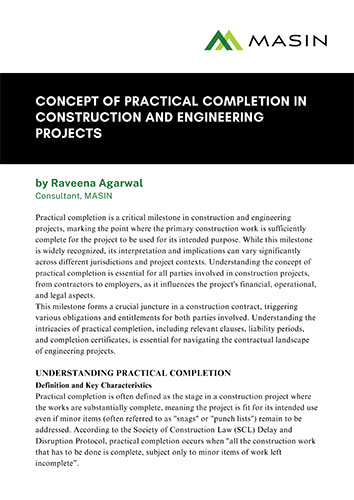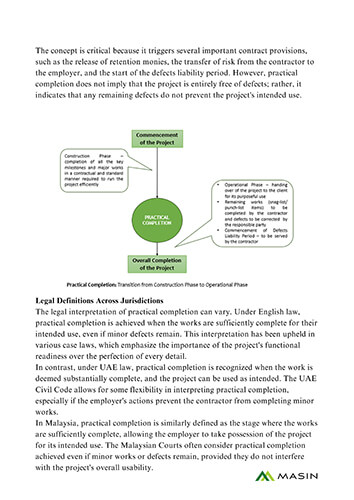
Concept of Practical Completion in Construction and Engineering Projects


Implications of practical completion
Practical completion is a contractual stage or milestone, that often necessitates a formal inspection and the issuance of a practical completion certificate usually be marked by the delivery of a completion certificate from the persons acting on behalf of the employer (an architect, contract administrator etc.). This certificate signifies that the contractor has fulfilled the primary obligations under the contract, though not necessarily all minor items.
- For Contractors
- For Employers/Clients
Frequently Asked Questions
Get answers to frequently asked questions about everything we do.
What is Practical Completion in construction projects?
Practical Completion refers to the stage in a construction project when the works are substantially complete and fit for their intended use, even if minor defects or outstanding items (snagging) remain.
Why is Practical Completion important?
It is a contractual milestone that:
- Marks the end of the contractor’s primary obligations.
- Triggers release of retention monies.
- Initiates the defects liability period.
- Transfers risk from the contractor to the employer.
- Often halts the accrual of liquidated damages.
Does Practical Completion mean all work is 100% finished?
No. Minor items may still be incomplete or defective, but as long as they do not prevent the intended use of the works, Practical Completion can be certified.
Who decides when Practical Completion is achieved?
Typically, a contract administrator, architect, or other representative of the employer inspects the works and issues a Practical Completion Certificate if criteria are met.
What are ‘snag lists’ or ‘punch lists’?
These are lists of minor defects or incomplete items identified during inspection that the contractor must address, often after Practical Completion has been certified.
What happens if there are defects?
- Latent defects (hidden) do not prevent Practical Completion.
- Patent defects (visible) may prevent it unless deemed trifling.
- Trifling defects are minor and do not materially affect the usability of the works.